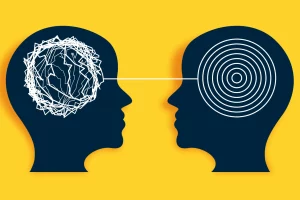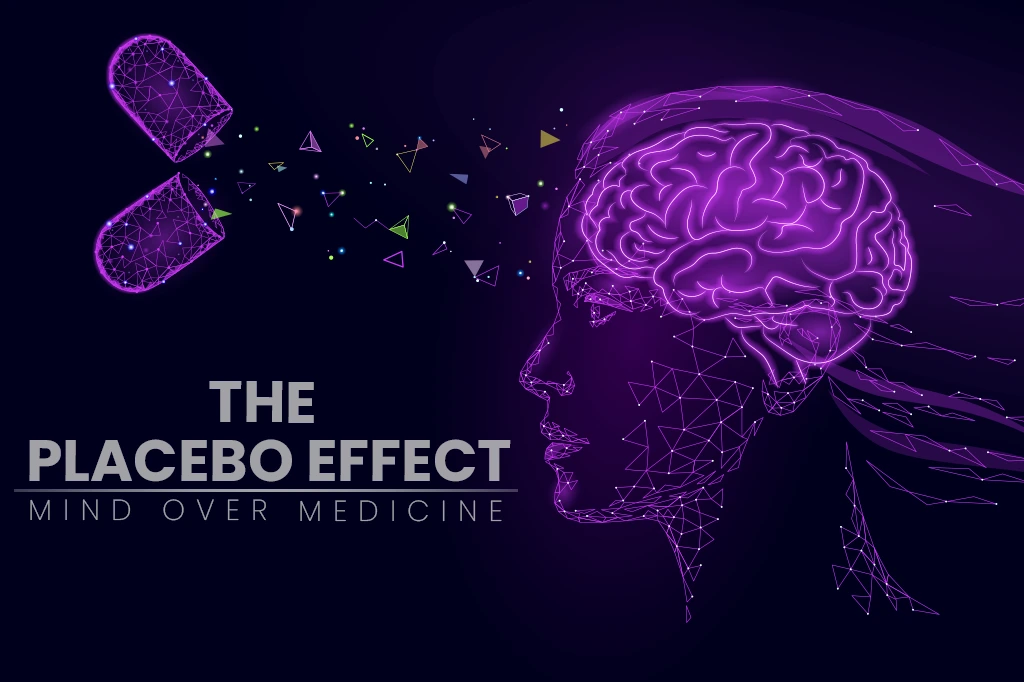
The Placebo Effect: Mind over Medicine
Summary
- The human mind holds the remarkable ability to convince the body.
- Belief and Expectancy possess the capacity to mend, comfort, and even astonish.
- Placebo effects are primarily attributed to psychological and physiological mechanisms.
Section Overview
- What is the Placebo Effect?
- The Psychology of Placebo Effect: Mind’s Power to Heal
- 5 Mechanisms behind Placebo Effects
- Placebo Effect Success Stories
- The Placebo Sweet Spot
- Delve into Self-Placebo Therapy
- Amplifying the Potential of the Placebo Effect with The Silva Method
- The Three Fingers Technique
- The Mirror of the Mind Technique
- The D-B-E Thought Process
- Distinguish Between Placebo and Placebo Effect
- The Nocebo Effect
- What is The Open-Label Placebo?
- The Placebo Effect: Healing or Deception
Believing in the efficacy of a treatment can stimulate the brain to release neurotransmitters such as endorphins and dopamine, which are known as the brain’s natural painkillers. These neurochemical changes can lead to genuine improvements in a person’s condition, such as reduced pain, improved mood, or enhanced immune system activity. Imagine this scenario, You’re in terrible pain, and your doctor gives you a pill. After taking it, your pain magically goes away. But here’s the surprising part: Your doctor says the pill was just a pretend one, like a sugar pill, with no actual medicine in it. What just happened? Is that really possible? Welcome to the mysterious realm of the placebo effect, where the power of belief can heal, soothe, and even astonish. “Placebo” is a Latin word, meaning “I shall please”. The term was first used by T. C. Graves in 1920. This term found its way centuries ago into medicine, when physicians would prescribe sugar pills to please their patients, despite knowing they had no therapeutic value.

The Psychology of Placebo Effect: Mind's Power to Heal
Our mind has the power to convince our body. This connection between our brain and body can be really powerful and can even improve our health, even if the treatment itself doesn’t do anything.
Professor Ted Kaptchuk says, “The placebo effect is more than positive thinking — believing a treatment or procedure will work. It’s about creating a stronger connection between the brain and body and how they work together” . He is renowned for his placebo-effect research at Harvard-affiliated Beth Israel Deaconess Medical Center.
Moving on to our next topic,
5 Mechanisms behind Placebo Effects
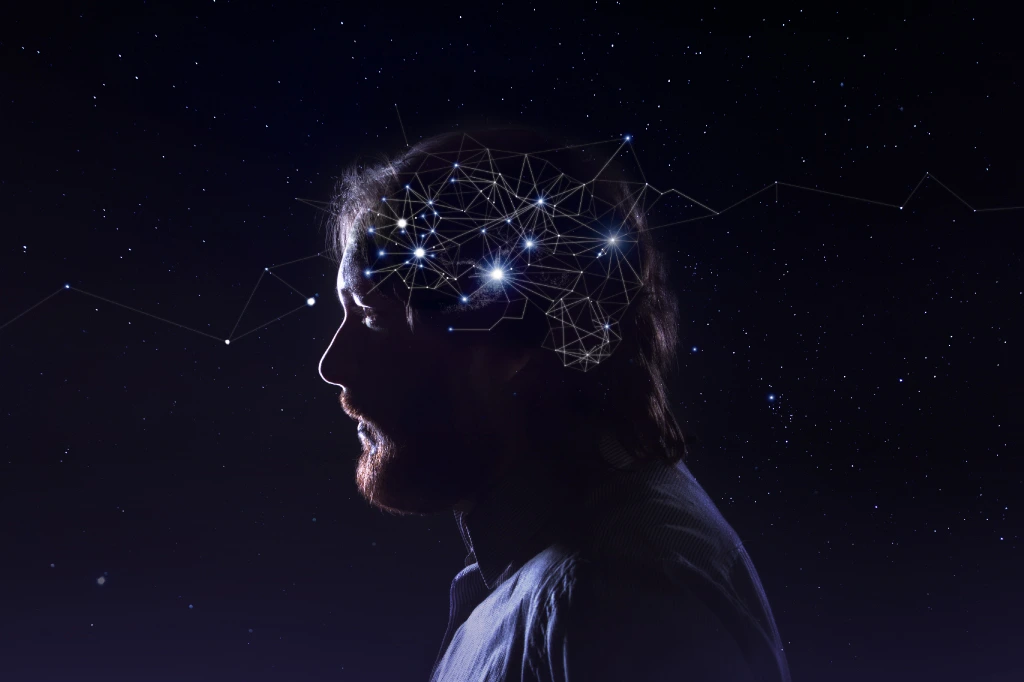
Placebo effects are primarily attributed to psychological and physiological mechanisms. Here’s a summary of some of the key factors contributing to the phenomenon of placebo effects:
1) Belief and Expectation:
A person’s beliefs and expectations play a crucial role in the placebo effect. When someone believes that a treatment will be effective, their brain’s response to pain and discomfort can be altered, leading to reduced perception of symptoms.
Certainly, there are various cues that can shape your expectations for improvement in different ways:
- Verbal: When a medical professional informs you that a specific medication will effectively treat your condition.
- Social: The mannerisms of your doctor, including their voice tone, body language, and eye contact, can provide a reassuring influence on the treatment.
- Actions: Experiencing an improvement in your well-being after actively taking a prescribed pill or receiving an injection.
2) Brain Chemistry:
When we think a pill or procedure will help us, our brain releases natural chemicals like endorphins and dopamine, which can reduce pain, improve mood, and boost overall well-being. These changes in brain chemistry can actually lead to real, measurable improvements in our health, even though there’s no active treatment involved.
3) Genetics:
Human genes can greatly influence how individuals respond to placebo treatments. Genetic variations related to neurotransmitter function. Individuals with specific genetic variations may be more or less responsive to placebos due to differences in how their brains release and respond to neurotransmitters like dopamine.
4) Reduce Stress and Anxiety:

The placebo effect can reduce stress and anxiety through the power of belief. When a person believes he is receiving treatment, even if it’s a sugar pill with no active ingredients, his mind can trigger a physiological response that alleviates stress and anxiety. This occurs because the brain releases feel-good chemicals like endorphins and dopamine, which counteract stress hormones.
5) Conditioning and Learning:
Conditioning and learning play a significant role in the placebo effect. When people repeatedly experience positive outcomes from a placebo, like feeling better their brains can form associations between the placebo and feeling better. This conditioning effect can lead to real physiological changes. Additionally, learning from past experiences and expectations can shape how a person responds to placebos.
Do you feel uncertain about selecting the most effective method for self-placebo therapy to facilitate self-healing? Let’s focus on our upcoming discussion that help you make a more informed decision.
Amplifying the Potential of the Placebo Effect with The Silva Method
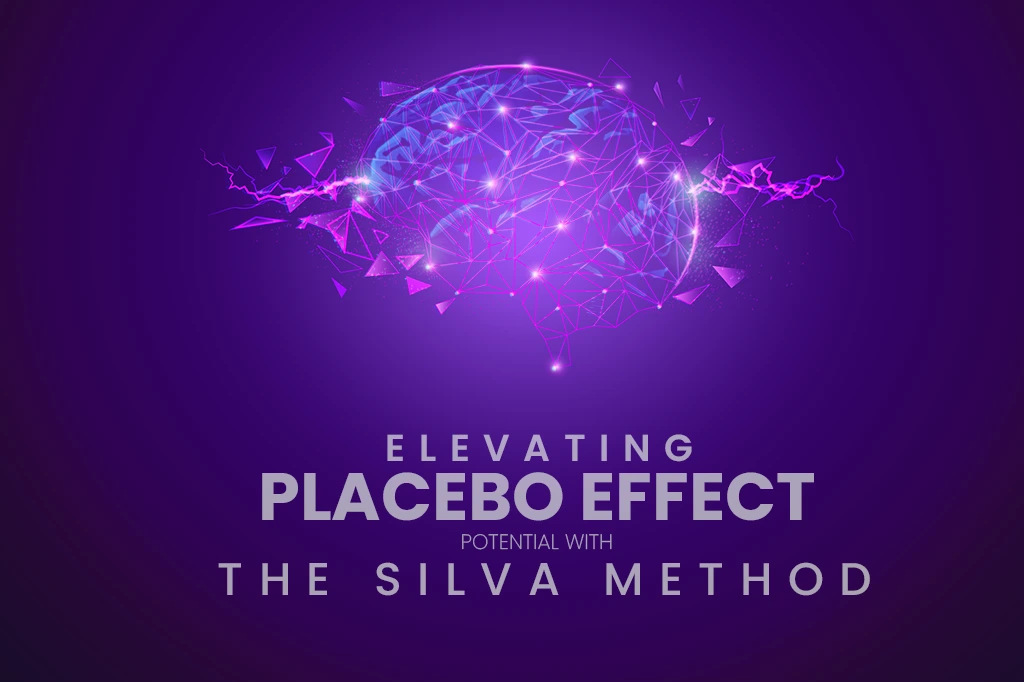
The Silva Method and the placebo effect are two different concepts, but they do share some overlap in the way they utilize the power of the mind to bring about positive changes.
Relation between The Silva Method and the Placebo Effect:
Belief and Expectation: Both the Silva Method and the placebo effect underscore the power of belief and expectation. The effectiveness of the Silva Method for an individual might be influenced by their belief in its potential benefits, similar to how a person’s belief in the efficacy of a placebo treatment can lead to real therapeutic outcomes.
Mind-Body Connection: The Silva Method emphasizes the ability of the mind to influence physical and mental well-being. Similarly, the placebo effect showcases how mental processes, such as beliefs and expectations, can influence physical responses in the body.
Self-Healing: Both concepts touch on the body’s innate ability to heal or improve when given the right mental conditions or stimuli. The Silva Method teaches techniques to harness this ability, while the placebo effect demonstrates it inadvertently.
In conclusion, while the Silva Method and the placebo effect are distinct, both touch on the profound ways our beliefs, expectations, and mental states can impact our physical and emotional well-being. However, it’s essential to note that the efficacy and experiences with the Silva Method vary among individuals, and its effectiveness has been a topic of debate in scientific communities.
The Jose Silva Mind Control techniques incorporated various mindfulness and meditation techniques that Serve as mentors along the journey toward positive change, helping us harmonize with our objectives and dreams.
The Three Fingers Technique
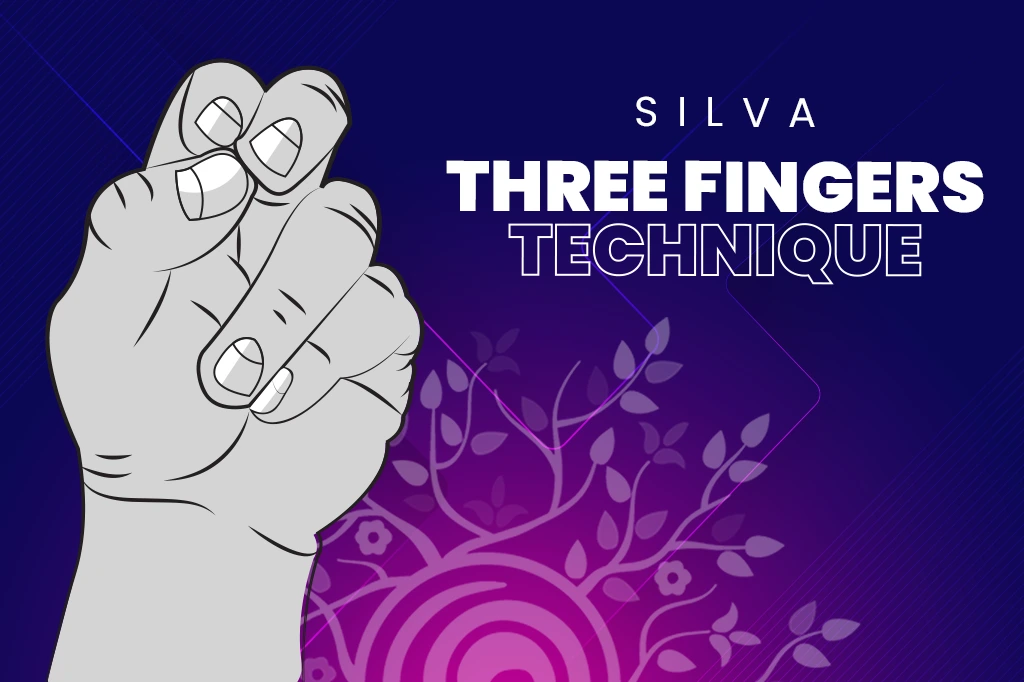
One of the core techniques of the Silva Method that is most closely related to the placebo effect is the Three Fingers Technique, wherein individuals are taught to press the thumb and first two fingers together. After associating this gesture with a deepened state of relaxation and concentration (achieved through prior training), individuals can quickly access this state whenever they press their fingers in this manner. In this state, they are more receptive to positive suggestions and affirmations.
Once the state of deep relaxation is associated with the gesture, the simple act of pressing the fingers together can evoke that state. This is akin to the placebo effect where a pill, devoid of any active ingredient, can induce therapeutic changes due to the patient’s belief and the suggestion (explicit or implicit) that it will work.
Mindset & Belief to practice the Placebo Effect:
For both the placebo effect and the Three Fingers Technique, belief is paramount. In the case of the Silva Method, practitioners must believe in the technique’s power to quickly induce a state of relaxation. Similarly, for the placebo effect to work, patients must believe they are receiving an effective treatment.
The Three Fingers Technique works through repetition and conditioning. Over time, the more you use the technique, the more effective and immediate the response becomes. This is comparable to how placebos can sometimes become more effective with repeated use, as the belief in their efficacy strengthens.
The Mirror of the Mind Technique

Another famous technique of The Silva Method is the Mirror of the Mind technique which solves problems in a magical way. This approach begins with the well-known 3-2-1 method and is followed by the 10-1 countdown technique that leads to the Alpha state of mind. This state of mind represents a profound state of relaxation, which can act like a placebo and foster a deep sense of calmness. Within this state, one can harness the ability to convert physical and mental challenges into manageable projects and effortlessly solve them.
During meditation, you have to visualize a pair of interconnected mirrors often referred to as the “mirror of the mind.” These mirrors can be imagined in varying colors, transitioning from blue and white. This technique, known for its simplicity and widespread success, has benefited numerous individuals. Mirror of the mind technique can be considered as a self-placebo therapy. Through this meditation technique, you can not only visualize your complications but also unlock your mind’s hidden power to solve those problems. It’s crucial to keep in mind that desire is the driving force behind accomplishment.
The D-B-E Thought Process

In The Silva Method D-B-E stands for Desire, Belief, and Expectancy.
Desire: To attain any goal, a strong and unwavering desire is necessary. Think about what you want, like good health, happiness, money, success, fame, or anything else you deeply desire. This desire should come from your heart and stay persistent as you work towards your goals.
Belief: After setting a goal, it’s vital to maintain the belief in your ability to achieve it. This belief is a vital component of reaching any objective. Therefore, it’s crucial to choose a goal that you truly believe you can accomplish.
Expectancy: Unwavering confidence in your success ignites a sense of positive expectation. Constantly expect that your goals are attainable, maybe it takes time. Your resolute expectation aligns with the potent aspects of your mind. It’s essential to nurture faith in your ultimate triumph.
In the placebo effect believing in something can make one feel better, even if the thing itself doesn’t really help. When a person holds the belief that a particular treatment will yield positive results, it can lead to alterations in their brain’s response to pain and discomfort. This, in turn, can result in a diminished perception of symptoms. Similar to the placebos The Silva Method is a self-help program that aims to enhance an individual’s mental abilities, promote relaxation, and improve overall well-being.
The Silva Method courses offer valuable assistance in enhancing your understanding of this self-placebo therapy. Utilize your mind’s potential, turn into the master of your mind, and reveal a physically and mentally better version of yourself.
The Placebo effects become a testament to the mind’s incredible influence over the body. It serves as a reminder that our thoughts possess the ability to mold our own reality. Furthermore, we will focus on some real-life examples of the placebo effect in action.
Placebo Effect Success Stories

In clinical trials, the patients or control groups are given the fake treatment, and then the effect of the placebo on them is observed. Here are some examples to prove that the placebo effect can influence various physical and psychological conditions.
Provide Relief in Migraine:
In a 2014 study, researchers tested how labeling affected reducing pain with 66 migraine sufferers. Participants were given pills labeled as either Maxalt (genuine migraine medicine), placebo, or neutrally labeled pills (either Maxalt or Placebo).
Result was:
- As a genuine migraine medication, Maxalt worked best
- Surprisingly, the Placebo pills labeled as Maxalt also offered more relief than taking no medicine at all.
- In most cases, Maxalt labeled as a Placebo was as effective as a Placebo labeled as Maxalt.
This experiment clarifies that our beliefs and expectations play a big role in how medicine works for us.
Reduces Depression:
In a 2015 study, 35 depression patients were given either “fast-acting antidepressant” placebo pills or regular placebos for a week. PET scans were conducted on both groups. One group received a placebo injection before the scan. After a week, they switched pills and had another scan. Following this, all participants received real antidepressant treatment for ten weeks. The study found that most participants experienced the placebo effect.
Improve Cancer-Related Fatigue:
A research was conducted in 2018 with 74 cancer survivors suffering from fatigue. Where researchers tested placebos versus standard treatment. Participants were divided into two groups and took either placebos or regular treatment for three weeks. Those on placebos initially and even after switching from standard treatment reported better fatigue relief.
Treat Parkinson’s Disease:
The placebo effect has demonstrated notable effectiveness in the management of Parkinson’s disease, which is a neurological condition characterized by unintended or uncontrolled movements, including shaking, muscle rigidity, and challenges in maintaining balance and coordination
A comprehensive analysis of eleven clinical trials revealed that approximately 16 percent of individuals suffering from Parkinson’s disease experienced enduring improvements. In this context, the placebo effect is attributed to the release of dopamine within the striatum, a subcortical region of the brain.
Now we will discuss a very intriguing topic, the placebo sweet spot. Have you come across this term before? Let’s explore this fascinating concept together.
The Placebo Sweet Spot
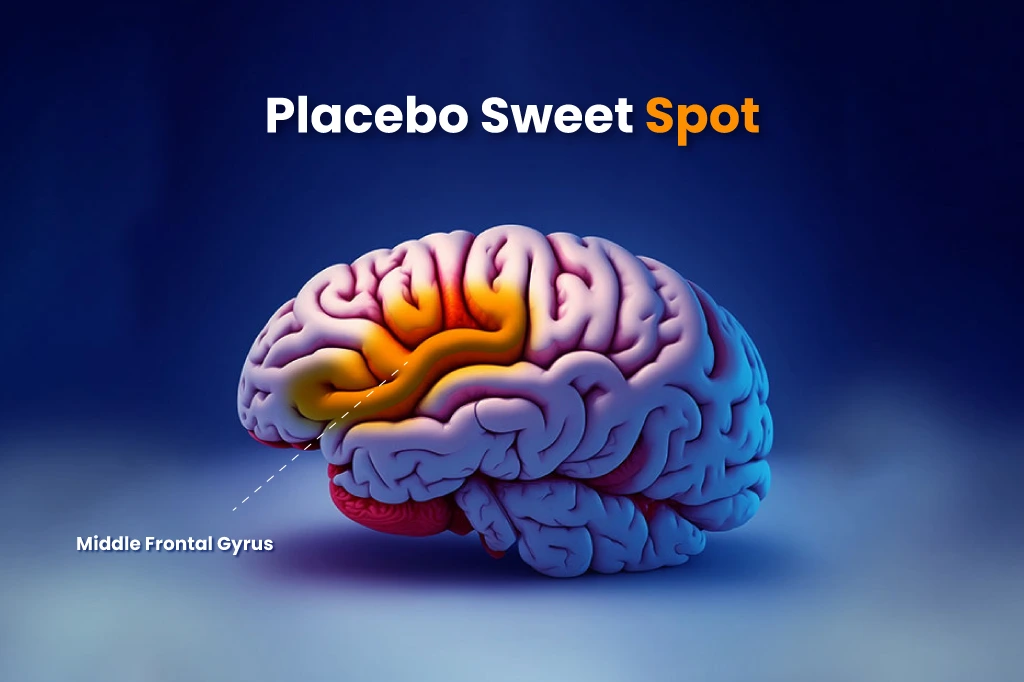
Scientists have found a region in the human brain that is responsible for the placebo effect in pain relief which is called the ‘Placebo Sweet Spot’. The area is the mid-frontal gyrus, located in the frontal part of the brain where a fake treatment actually results in the reduction of pain. The innovative fMRI technology designed for this research holds the promise of ushering in a new era of personalized pain management, as it allows for the customization of pain medication according to an individual’s unique brain response to a specific drug.
Can we become our own Self-Placebo and heal ourselves?
Delve into Self-Placebo Therapy

Robert M. Rose, MD, Director of Mental Health for the John D. and Catherine T. MacArthur Foundation, agreed, “There is really an interest in and capacity for people to do self-healing. People can enhance their capacity to heal.”
Apart from medical specialists, individuals like close friends, family members, or spiritual guides can also have a significant impact on the placebo effect. Patients who engage in supportive communities with fellow sufferers of the same ailment often experience enhanced symptom relief and a boost in their daily functioning. Embracing a healthy lifestyle, maintaining a balanced diet, ensuring adequate sleep, and practicing mindfulness techniques can act like placebo therapy, fostering self-healing. Additionally, spiritual guidance serves as an alternative therapeutic approach, alleviating anxiety and fostering greater optimism and hopefulness in a person.
Move on to the next topic,
Distinguish Between Placebo and Placebo Effect
There is a clear distinction between Placebo and the Placebo Effect. Placebo refers to an inert substance such as a sugar pill, a saline solution, an injection, or even a simulated surgical procedure. Conversely, the placebo effect arises from an individual’s belief in the treatment’s efficacy and their anticipation of experiencing improvement, rather than being dependent on the specific attributes of the placebo itself.
Dr. Joe Dispenza is a remarkable scientist and researcher who delves deeply into the remarkable influence of our minds on our physical well-being, he illuminates the immense potential of our thoughts. Through his teachings, Dr. Dispenza reveals how the power of our minds can reshape our existence, foster bodily healing, and usher in a life that transcends ordinary boundaries. His book, ‘You Are the Placebo‘ serves as a guide for navigating the journey from current circumstances to envisioned aspirations. In recent decades, his pioneering research has unveiled the remarkable ability of the human mind to facilitate the healing of the body.
There is another side to the coin,
The Nocebo Effect
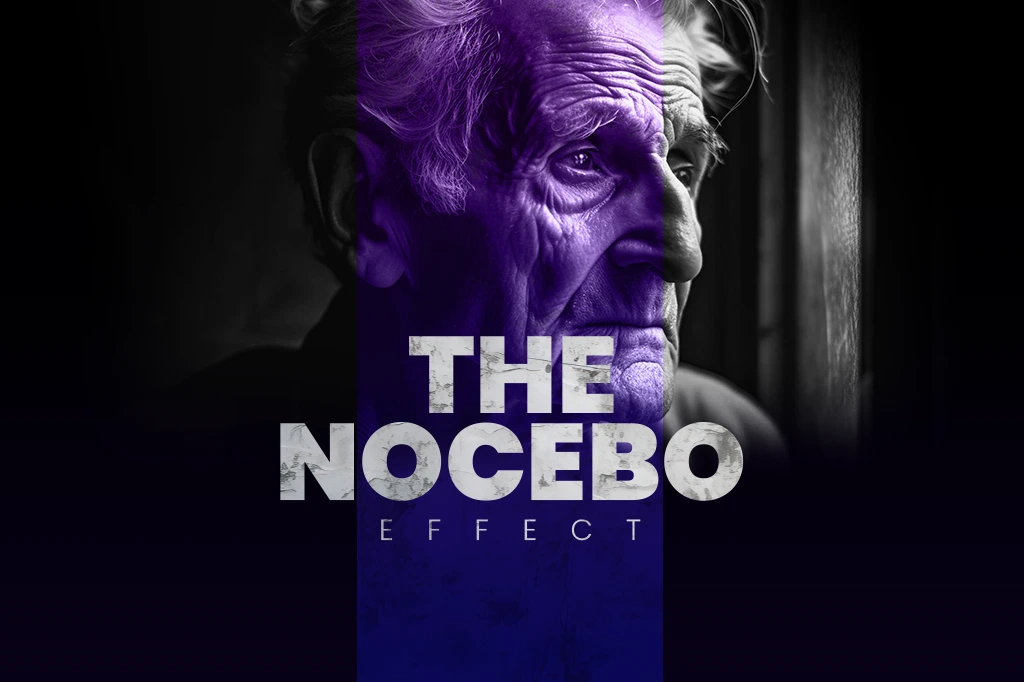
The nocebo effect serves as the counterpart to the placebo effect. While the placebo effect refers to the phenomenon where a person experiences positive health improvements due to their positive beliefs. The nocebo effect refers to the opposite situation: when a person experiences negative health effects or worsened symptoms due to negative expectations.
For example, if someone is told that a medication they’re taking might cause severe side effects, they might actually experience those side effects even if the medication itself wouldn’t typically cause them. This can occur purely due to the person’s heightened anxiety or negative beliefs about the treatment.
What is The Open-Label Placebo?

Open-label placebo refers to a type of medical treatment where patients are fully aware that they are receiving a placebo and still experience improvements in their condition. This phenomenon underscores the power of the mind in healing and suggests that belief and expectation can play a significant role in medical outcomes, even when the treatment itself has no active ingredients or medical benefits. Open-label placebos are sometimes used in research and can provide insights into the mind-body connection in healthcare.
Sometimes, people taking placebos experience negative effects like nausea, sleepiness, or skin rashes. This is called the “nocebo effect.” Even if it makes their symptoms better, tricking people into thinking they’re getting treatment is considered unethical. Is it justifiable to use the placebo effect in medical treatment?
The Placebo Effect: Healing or Deception
Placebos are like pretend treatments used in research to hide whether a real treatment is given or not. This helps scientists check if a treatment works beyond just people’s beliefs. Most people agree that giving someone a placebo is unethical if it could seriously harm them, lead to major health problems that can’t be reversed, or cause death. Some people may not like these trials because they think if there’s already a proven treatment, we shouldn’t use fake ones. But others say placebo trials are still important to prove if new treatments work and are safe.

